How To Layer Decor In A Room
Layering decor transforms a space from basic to beautifully curated. It enhances a home’s warmth, making it feel more inviting and thoughtfully designed.
A well-layered room has depth, balance, and a sense of intentionality, where each piece works together to create a cohesive look.
Whether adding texture through textiles, incorporating different lighting sources, or arranging accent pieces, layering is the key to a polished and welcoming home.
This post contains affiliate links. That means when you click on some of the links in this post and you make a purchase I earn a small commission at no cost to you. All my opinions are my own.
I always keep a running checklist in my head when decorating any space. This mental list helps me focus on essential design principles that bring a room to life. At the top of that list is layering.
A room might have great bones and beautiful furniture, but without layers, it can feel uninspired. When a space looks flat or lacks warmth, layering is the first thing to consider. Thoughtful layers create visual interest, making a room feel more inviting and cohesive.
Well-layered decor draws the eye in, making a space feel effortless yet intentional. The goal is to create rooms that feel comfortable, balanced, and interesting.
Now, let’s talk about what layering is—and what it isn’t. The right approach might surprise you!
WHAT IS LAYERING DECOR
Layering decor involves arranging furniture, textiles, lighting, and accents in a way that creates a harmonious and balanced space. It isn’t about piling on more items—it’s about selecting and arranging elements that complement each other.
Simple, well-thought-out layers add beauty without creating clutter. Every element should contribute to the room’s overall feel rather than compete for attention.
WHAT LAYERED DECOR IS NOT
Oh, there is so much to say about this! Layering decor is often misunderstood, and I’ve seen—and even been guilty of—calling cluttered spaces “layered.” But too much of a good thing is simply too much.
It’s a common misconception that filling shelves with plates, pictures, plants, and seasonal decor makes them look styled. In reality, all those pieces compete for attention, creating visual confusion instead of a beautifully layered look.
The same goes for sofas piled with pillows in different shapes, colors, and patterns. While pillows are essential for layering, too many can make a space feel cluttered instead of cozy.
Layering should be intentional and visually pleasing, not overwhelming. Before finalizing a space, take a step back and edit. The best decorating advice? Remove a few things, then remove a few more.
The key to successful layering is simple—keep it balanced, thoughtful, and uncluttered.
THINK OF SIMPLE LAYERS
I think one of the easiest ways to show you what I mean by keep layers simple is to look at my dining area table.
It is layered. But you might not think so at first glance.
A fun area rug, a round pedestal table, and upholstered chairs with a lumbar pillow sitting on one chair. On the table, there is a burlap table runner and a big glass vase of tulips, and a pair of thin brass candlesticks with white candles.
If done right layering is just so pretty. When different design elements are brought together to make a room interesting and pleasing… that is layering decor.
FLOORING: The Foundation Layer
The floor sets the stage for the rest of the room. A well-chosen area rug adds warmth, texture, and definition to a space.
A large area rug helps define seating areas in open-concept rooms, while smaller rugs can add comfort in specific zones like under a dining table. Keeping rugs consistent in color and pattern from room to room creates a cohesive look.
Instead of layering multiple rugs on top of each other, focus on selecting one that enhances the space.
For more tips on selecting rugs, read Mixing and Matching Area Rugs in Your Home.
WALLS AND WINDOWS: ADDING DEPTH
Walls and windows are often overlooked as layering opportunities, but they are just as important as furniture and accents.
Wall color serves as a background layer that influences the entire room. Choosing the right paint color makes decorating easier and helps tie all elements together.
For guidance on selecting the perfect paint, read How to Choose the Perfect Paint Color.
Here are three very important posts that will help you with this layer of a room:
HOW TO CHOOSE THE PERFECT PAINT COLOR
WHAT YOU NEED TO KNOW ABOUT WARM AND COOL COLORS
WHAT ARE CLEAN AND DIRTY COLORS AND HOW THEY AFFECT THE WAY YOU DECORATE
These three posts will help you so much not only in layering decor but getting colors to work together in your home. I suggest you take the time and read the above post together. There is lots of aha! ideas and advice for you!
Now, let’s turn attention to windows and, more specifically, window treatments.
Curtains are a favorite decorating element because they add softness, pattern, and color to walls. But does every window need curtains? Absolutely not! If a window is a focal point in a room, has an interesting architectural design, or is surrounded by very little wall space, leaving it bare might be the best option.
Another great choice for windows is decorative blinds. They provide privacy while keeping the look clean and tailored.
A good example of when to use curtains and when to skip them is the dining area. Large windows can benefit from the warmth and texture of curtains, while smaller windows or those in a tight space often look better left uncovered.
Our dining area is a good example of when to use curtains and when not to.
Furniture: The Essential Layer
Furniture includes the foundational pieces that make a room functional. When chosen thoughtfully, furniture makes a space both practical and beautiful.
The best approach is to use only what is needed. In a living room, that might mean a sofa, a few chairs, a coffee table, end tables, and a console.
Keep it simple. Many home decorators add too many furniture pieces, which can overwhelm a space. Too much furniture results in too many layers, making the room feel cluttered rather than inviting.
A great rule to follow: less is best when it comes to decorating. This approach keeps a room looking fresh and allows for easy updates over time.
When selecting furniture, consider classic and neutral options. This makes it easier to change accent decor, color palettes, and overall style without replacing major pieces.
Our dining area is a great example of how furniture choices impact layering. A dining table and chairs should fit the space without feeling cramped. A table that is too large or chairs that overwhelm the room can make the space feel cluttered rather than inviting.
Experimenting with different arrangements over time helps achieve the right balance. In my own dining area, I’ve swapped out chairs and tables to find the perfect fit. A bar cart once seemed like a good idea, but it made the space feel off. Removing it instantly made the room look more open and cohesive.
For more ideas on creating a cohesive space, read How to Have a Cohesive Home.
ACCENT DECOR: LAYERING PERSONALITY
I am a self-professed embellishment queen! I love to make things pretty. And accent furniture and decor do just that.
Adding a fun chair to a room, a grouping of candlesticks, a beautiful plant, art, or a mirror can instantly make a space feel more curated. These elements show off personal style and give a room character.
Accent decor is an essential decorating layer. While rugs, walls, curtains, and furniture create the foundation of a space, it’s the accents that bring it to life.
One of the most important things to remember when layering accent decor is balance. Items on one side of a room should be in proportion to those on the other. This creates a space that feels cohesive and well thought out.
For more details on achieving balance in decor, read What Is Balance and How to Use It When Decorating.
Another key to layering beautifully is editing. While every room needs accent decor, it’s easy to go overboard. Keeping it simple ensures that each piece stands out without overwhelming the space.
VIGNETTES: SMALL, STYLED LAYERS
Let’s expand on accent decor and talk about vignettes. One of the easiest ways to create gorgeous layered decor in a room is to style vignettes.
Vignettes are small, curated groupings of decor that tell a story. Whether arranged on a coffee table, console, or bookshelf, they add a layer of personality to a space. The best vignettes reflect personal style or the season, making them feel intentional rather than like random collections of objects.
Grouping accent decor into a vignette creates a focal point, keeping a space visually interesting without feeling cluttered. The key is balance—mixing textures, heights, and materials while keeping the arrangement simple.
For step-by-step styling tips, read 10 Elements of a Vignette.
LIGHTING: THE OVERLOOKED LAYER
Lighting plays a crucial role in layering decor. Combining multiple light sources—such as overhead lighting, table lamps, and wall sconces—creates warmth and depth.
Using dimmable lights and layering different types of fixtures ensures that a room feels inviting at any time of day. Accent lighting, like picture lights or candlelight, adds an extra touch of ambiance.
TEXTILES: SOFTENING THE SPACE
Layering fabric items is another way to enhance accent decor. These “soft” furnishings may seem subtle, but together they create a beautifully cohesive look that adds warmth and texture to a room.
Think about rugs, curtains, pillows, and throws. Each fabric choice should complement the others, contributing to an overall design rather than standing alone. A well-layered mix of textiles makes a space feel inviting and thoughtfully curated.
Pillows are one of the easiest ways to layer decor. They can instantly change the look and feel of a room. Mixing different sizes and shapes while keeping a consistent color palette ensures a balanced look. Becoming a pillow pro is a simple yet effective way to refresh a space throughout the seasons.
You might like to read 5 NO-FAIL PILLOW ARRANGEMENTS FOR YOUR SOFA. And 8 WAYS TO ARRANGE PILLOWS ON A BED. Also, HOW TO ARRANGE PILLOWS ON A SECTIONAL.
The image above of the dining chair with the lumbar pillow is a great example of simple layered decor. The rug, curtains, and textiles all work together, adding softness and interest to the room without overwhelming it.
OTHER THINGS TO CONSIDER WHEN LAYERING DECOR
As always, to be a successful home decorator we need to keep that mental checklist in mind. It’s a checklist of all the designer tips and secrets we know will create a welcoming home we love.
Here are a few things to keep in mind to help those gorgeous layers add up to a spectacular room!
WHY SPACE IS SO IMPORTANT WHEN YOU DECORATE
RHYTHM AND REPETITION IN DECORATING
I hope you have enjoyed learning about layering decor and will use it when you decorate!
Layering decor creates a home that feels welcoming, polished, and thoughtfully put together. Keeping layers simple, balanced, and intentional prevents a space from feeling cluttered while adding personality and warmth. With the right mix of furniture, accents, and textiles, a home can feel stylish and inviting without being overwhelming.
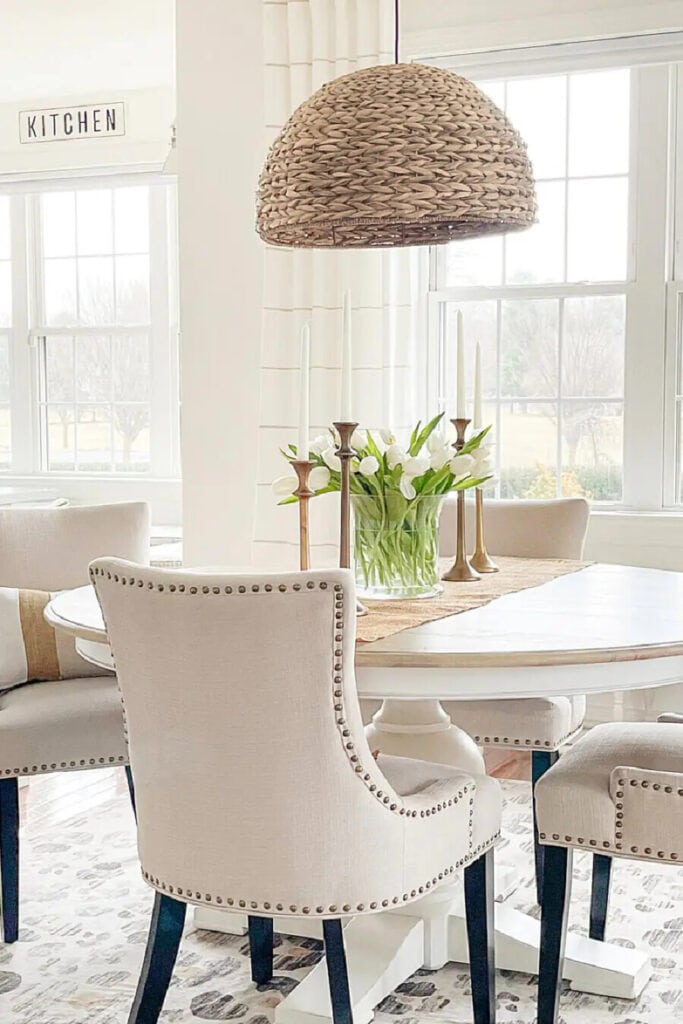
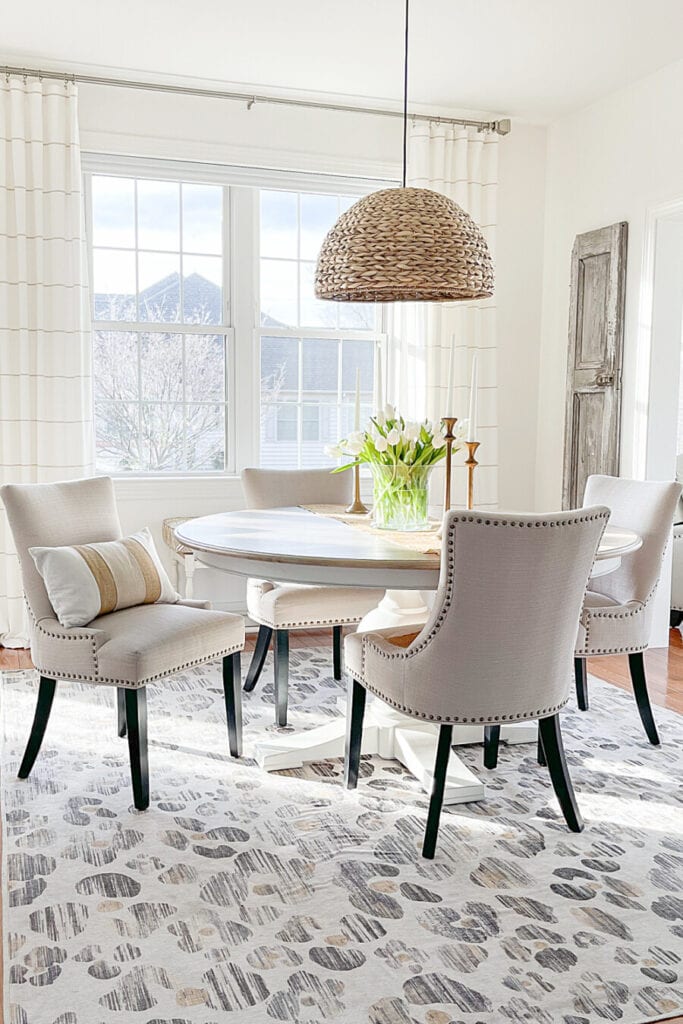
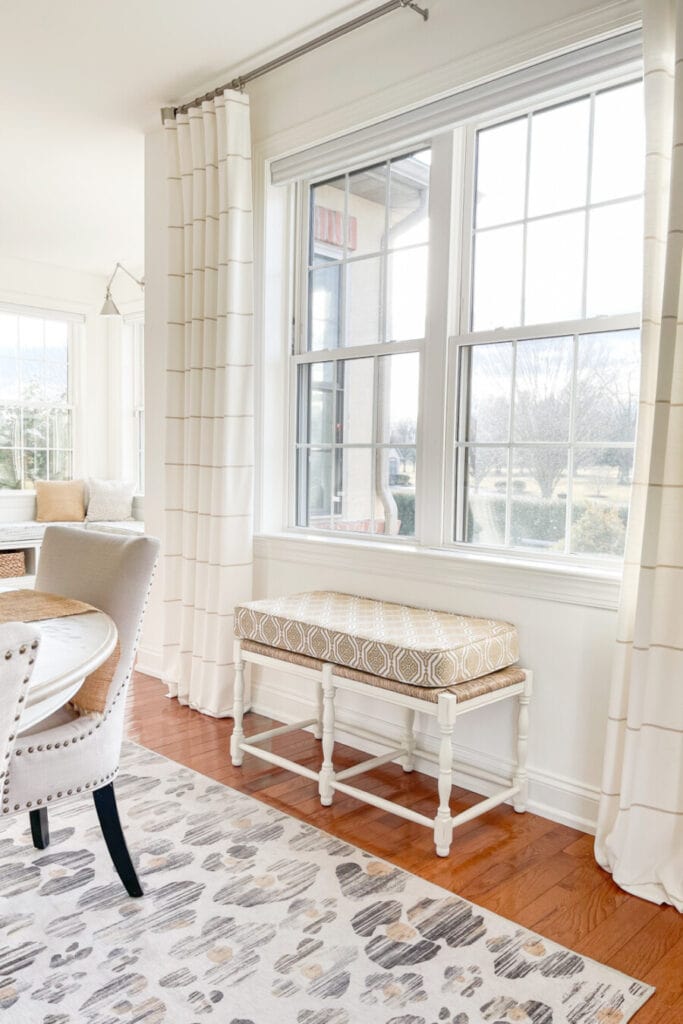
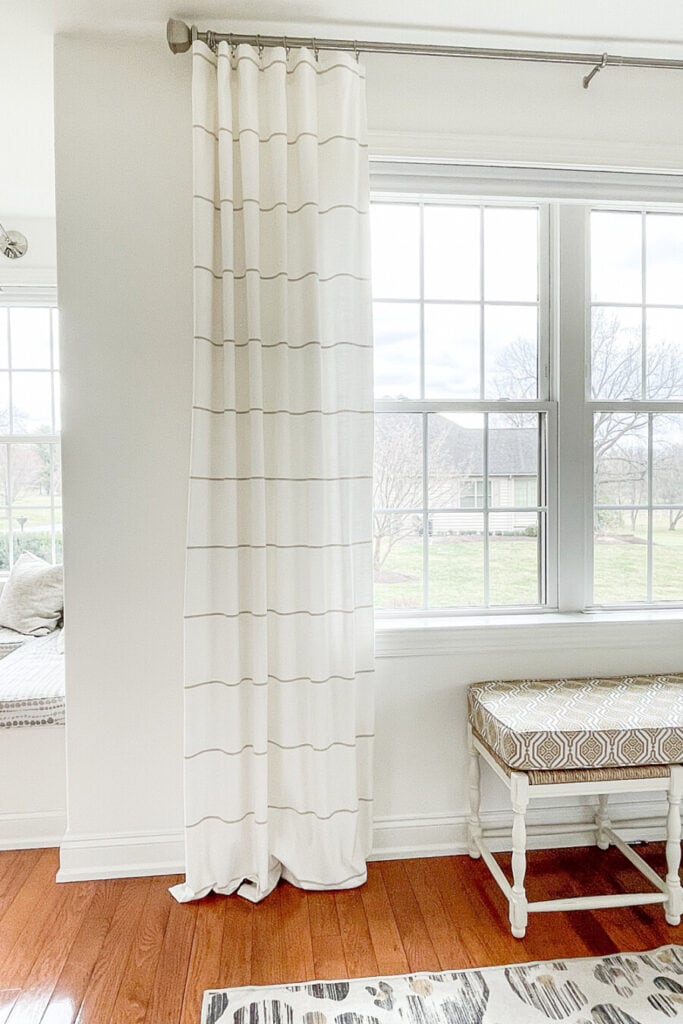
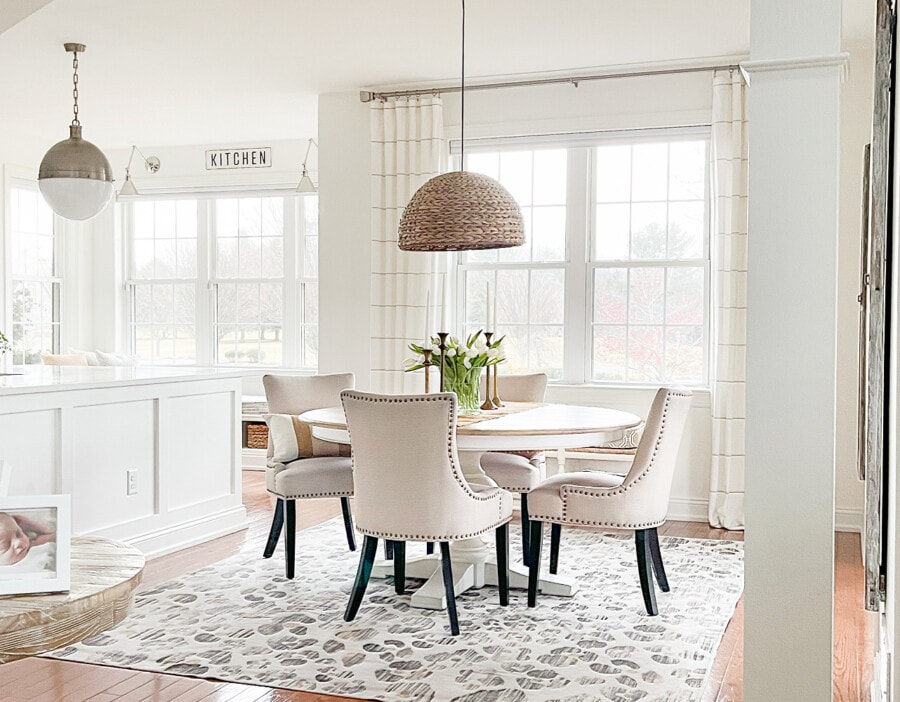
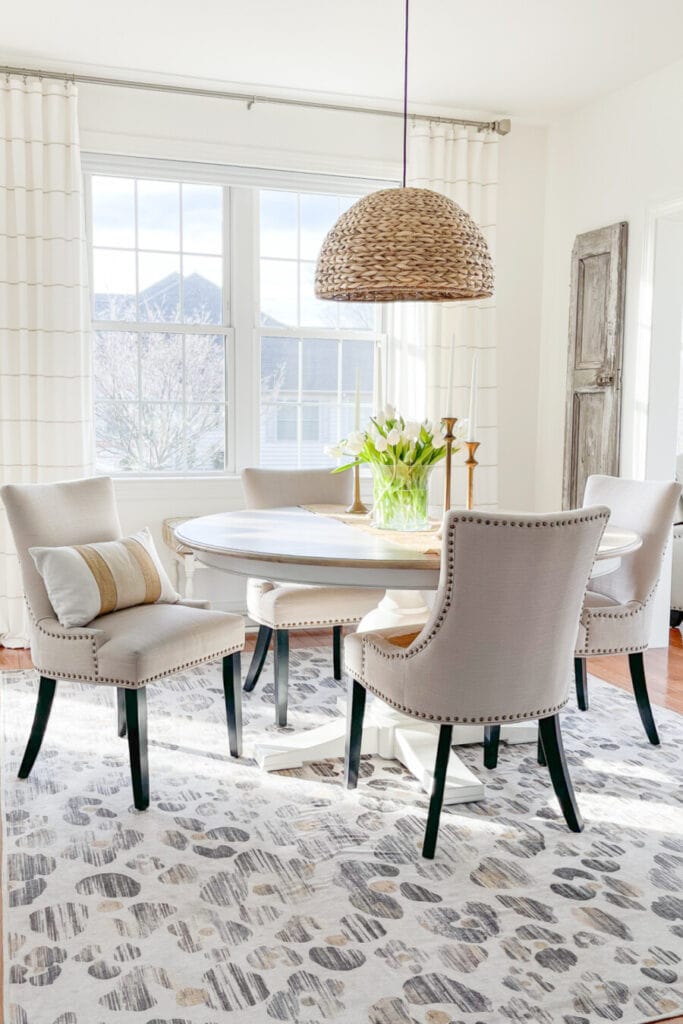
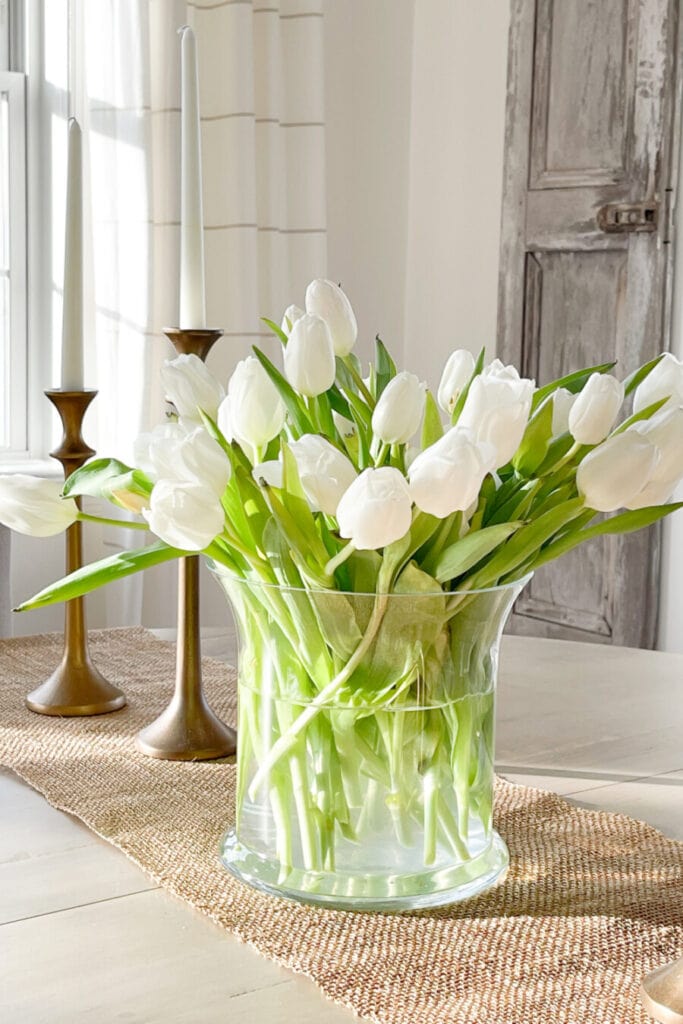
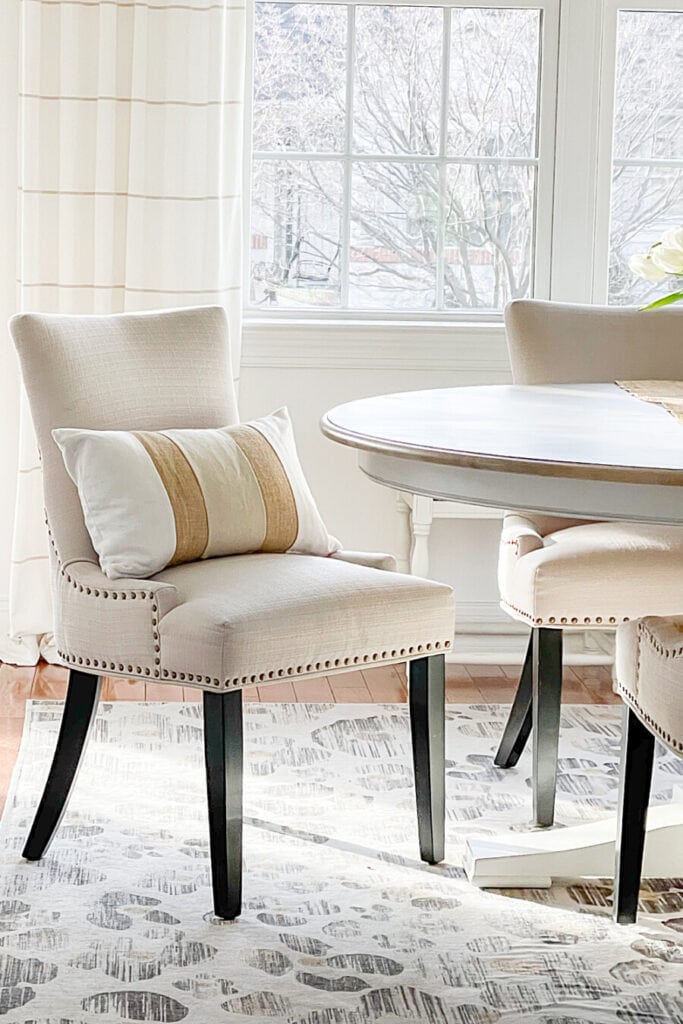

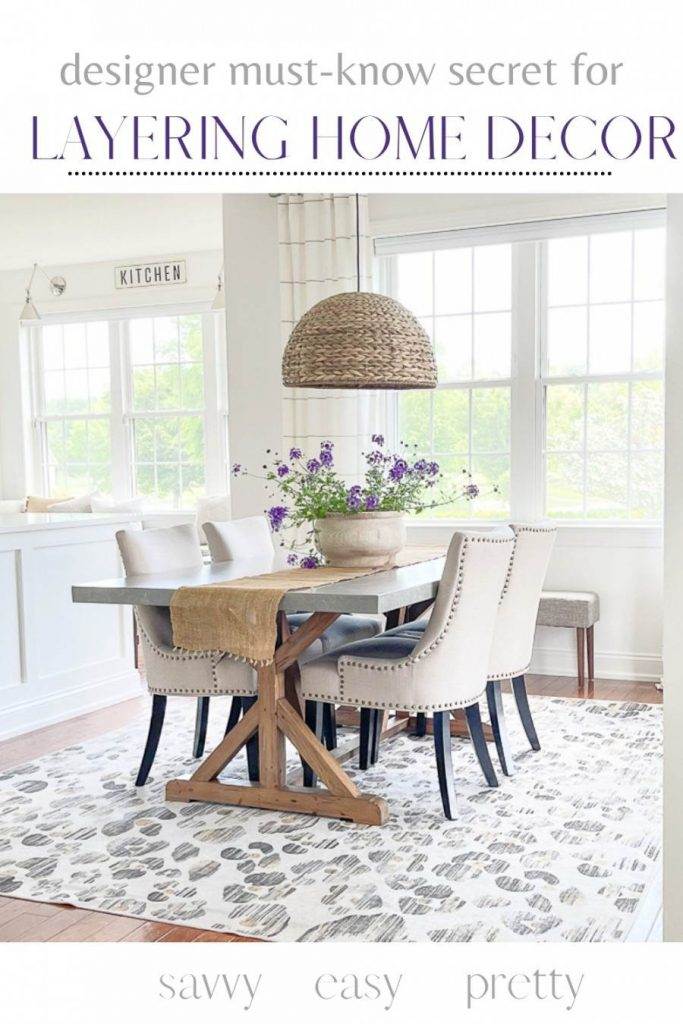
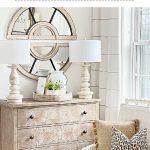
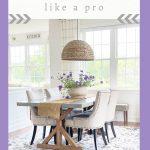

Hi Yvonne,
Where did you get the wooden planter that you have on your dinning table?
Hi Ashley,
I found it locally. Sorry, I can’t find a source.
What an informative, relevant and useful post. Thank you for sharing! I savored every word and will take it to heart. I love a good vignette, but as you have so recently pointed out in various articles, over-decorating is quite the dilemma! I can relate! I do enjoy your blog so very much.
This thrills me, Pam! I’m so glad StoneGable is useful!
I love to put shiny new with chippy. The juxtaposition adds interest to any vignette. A little whimsy in a room doesn’t hurt either. Makes for a great conversational moment. You’re absolutely right about too many layers. I see some pictures on Instagram or blogs were they have added on and added on. It boggles the mind. A room needs a place where the eye can rest. As always, a great lesson on design, Yvonne.
Your dinning area looks lovely! The neutral colors are so comforting. Thank you for the great decorating tips!
Mary Anne, thank you so much! How sweet!
Beautiful, but can you show examples of layering patterns and colors (not just neutrals) Thank you
Can a table runner stand alone or does it need to have something on top of it? I haves these beautiful beaded runners 36″ and need some ideas of how to decorate with them. I Feel they are very busy and using them as a layer is too much. What would you do?
A table runner should have something on top of it. Try putting a large white planter with a houseplant in it on top of the beaded runner.
Hi, I do like some of your ideas, but I was just wondering what you meant by “saving your kids from having to ride the bus? I myself am a retired school bus driver, I always took pride and care to deliver the kids home safe and sound !! Also I find your color scheme rather boring !! I love more color!! Sorry, that is just my opinion!! Keep up your good work!! And ad some color !!
Hi Marty! I certainly did not mean any offense. I was a teacher and I know how rowdy school bus rides could be.
Yvonne, you are such a wealth of knowledge and we thank you, so much, for everything you share with us. We always benefit from your posts and can use all your suggestions in making our house a home. Bless you, Yvonne! I thank God for you and the special gal you are! Have a great week!
So good to hear from you Mary Ann!
Hi! Your dining area was a great example! It looks beautiful! I think subtle things can be so beautifully layered rather than competing things that are not restful to look at. The advice you gave is so good! I think sometimes the layered looks in decorating and blogs are either just messy or unworkable for living with it in real life, even if they photograph cute. You are so right about how things can just look piled up. I do not want that look for my house. Tiny decor, too, can look messy, not tied in well. I want it pretty, not lots of little knicknacks everywhere and no really eye-catching special things. Plus it needs to be multifunctional. I have a large black vase that is very pretty, and it looks better than if I rotated vases. I can put dried eucalyptus, or nice faux florals that are seasonal, or a large something, or even nothing at all, and it goes better than a small trio of vases or something in decor I can’t use all year long. It layers better with things because it goes with everything I have.
Great ideas!
I am learning, and playing, all about vignettes from you. Lol. Enjoying it too. One favorite idea of yours, I learned about how to cover books in burlap as risers. A fav! Still struggle with Mantle decorations.
I’ll be using these tips very soon in a current project I’m doing! Thanks !!!
I absolutely LOVE coming to your blog for inspiration and motivation. I can always envision how I want to create my space; however, if I sit on it too long, I’ll start overthinking and before I know it, the space is still bare months later! I need to start trusting my instinct and realize that hey, if it doesn’t work, it’s not permanent! Committing to solid staples and changing up my layers is easier to process for an over-thinker like me!
I love your horizontal striped curtains in your dinette area. Can you please share a link?
Always such beautiful ideas!
I love creating a little vignettes throughout my home. It always adds interest and definitely tells a story! Thanks for such a great post…. it was very inspirational!
Yvonne, I just want you to know how inspiring your decorating style is. I love your layering in your dining room, It is simplistic but well curated and I am a fan of your dining room table and chairs. Love, love your curtains,they just add to be beauty. Well I am off to use your inspiration. Have a great day.
My favorite way to layer is in rugs!
Thank you so much for the reminder to keep it simple. 🙂
You have impeccable taste….I want to be you when I grow up!
so many great details in this article. a must save!
Layering has always been a challenge for me, but I will put more effort in because it looks so great!
Great ideas! Thank you!
Thank you for the tips on layering! Can’t wait to incorporate these tips into my own home decorating!
Love all your posts. They are just so helpful. I have used many of your tips in my own home. I also love your recipes. Thanks for your terrific blog.
Thank you so much Joan!
Can you provide a link or a source for your drapieries? These are exactly what I am looking for. I love the thin stripe in them. Most I have seen are either a large color clock stripe or a vertical stripe. These are perfect!
All the drapery in our home is from Ballard Designs. They are so beautifully made. The drapes you are looking for are on sale now and they ship free! Here’s the link:https://rstyle.me/+dDnQ1V1rkqiZ2YxPpwDTcw
Hello Yvonne!! Thank you for all of your fun, informative posts. They are a great part of my day!
Can you provide me with information on your dining room chairs. Any help you can give would be appreciated.
Happy New Year! ❤️Rhonda
Hi Rhonda, Aww! Thank you for your ver kind comment. The table is from Ethan Allen. It’s the Cooper round, and it’s on sale right now.